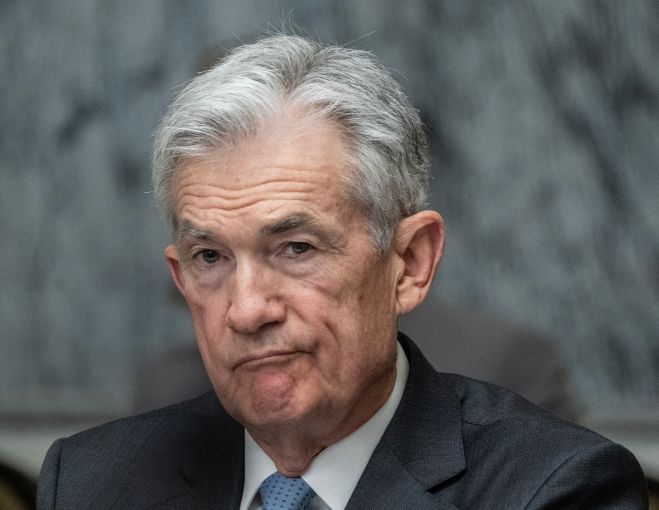Fed’s Rate Decision Keeps Commercial Real Estate Guessing
One is indeed the loneliest number, and a far cry from the six interest rate cuts hoped for at the start of the year.
By Andrew Coen June 12, 2024 3:18 pm
reprints
The Federal Reserve held serve with interest rates for a seventh straight meeting Wednesday and indicated that an easing of monetary policy may be slower than what the commercial real estate industry is hoping for.
The central bank maintained its benchmark interest rate at between 5.25 percent and 5.5 percent and said in its post-meeting statement that lowering inflation to 2 percent remains a chief target before reductions can occur. A new Fed Summary of Economic Projections report released concurrently Wednesday forecasts one rate cut in 2024 compared with three that were estimated in December 2023, which had prompted many in the market to pencil in six or seven cuts. However, the Fed’s 2025 forecast calls for four cuts, up from three previously estimated.
“We remain highly attentive to inflation risks,” Fed Chairman Jerome Powell said in a post-meeting press conference. “We do not expect it will be appropriate to reduce the target range of the federal funds rate until we have gained greater confidence that inflation is moving sustainably toward 2 percent.”
The Fed decision came hours after the Bureau of Labor Statistics’ (BLS) latest Consumer Price Index (CPI) showed prices rising 3.3 percent in May compared to the same period 12 months ago, an improvement from the 3.4 percent yearly CPI increase reading in April. The index rose just 0.2 percent on a monthly basis, marking its slowest pace in two years.
Powell said while inflation has “eased substantially” down to 2.7 percent from around 7 percent, the number is “still too high.”
Prior to the Fed’s streak of keeping interest rates steady going back to last September, it had implemented hikes in 11 of 12 meetings from March 2022 to July 2023 to bring borrowing levels to their highest point in 22 years.
Wednesday’s Fed meeting and CPI report coincided with the final day of the Commercial Real Estate Finance Council (CREFC) June conference in Manhattan where the negative effect of elevated interest rates was a big focus. Lisa Pendergast, executive director of CREFC, said the May CPI print coupled with the latest BLS Gross Domestic Product increase of just 1.4 percent gives CRE finance professionals hope for rate cuts on the horizon if future data confirms inflation is heeded in the right direction.
“The reality is we need rates to fall because many of the loans that are coming due are somewhere in the three and a half, 4 percent coupon range, and today they’re somewhere in the 7 to 8 percent range, so a lot of the large loans that are maturing this year are getting extended for a period with its current rate,” Pendergast said. “I think that the Fed is looking for data to hang their hat on if they were to decide to ease.”
Despite unfavorable conditions facing a number of borrowers with higher for longer interest rates, especially in the commercial mortgage-backed securities (CMBS) market, Pendergast noted that CRE loans are weathering the storm far better than was feared. She said the single-asset, single-borrower CMBS delinquency rate of 5.1 percent is much lower than during the 2008 Global Financial Crisis and underscores the more “moderate” underwriting standards in place now compared with two decades ago.
Sam Chandan, director of New York University’s Chen Institute for Global Real Estate Finance, stressed that while the Fed could begin to ease monetary policy in the second half of 2024 if core inflation remains on a downward path, long-term interest rates carry far more significance for the CRE markets.
“A cut in the Fed funds target rate should not be conflated with a decline in the longer-term rates that are more relevant for the real estate sector,” Chandan said. “Every lender and borrower should be stressing portfolios for scenarios where the contrived commercial real estate finance yield curve moves from inverted to flat and refinancing challenges persist.”
David Kelsey, co-founder of Hamilton Point Investments, a CRE private equity owner/manager, said he is forecasting interest rates to remain largely flat for the next 12 months due to forecasts of high inflation not budging much. Kelsey bought his first apartment property in 1988 with a mortgage of 12.5 percent that was refinanced at 11 percent, which he said helps his perspective when deciding how to tackle deals.
“Even throughout the ’90s when you take a look at interest rates there was a spread there because your yields on real estate were 8 percent, 7.5 percent depending on the property type but you were still borrowing at around 6 percent,” Kelsey said. “The prices haven’t come down to result in those types of yields where there’s a significant spread to the current interest rate, but in the properties that we have purchased in the last 12 months we have seen a very significant discount to either the peak asking price or the peak pricing in a particular market from say 24 months ago when interest rates were still at all-time lows.”
Andrew Coen can be reached at acoen@commercialobserver.com


